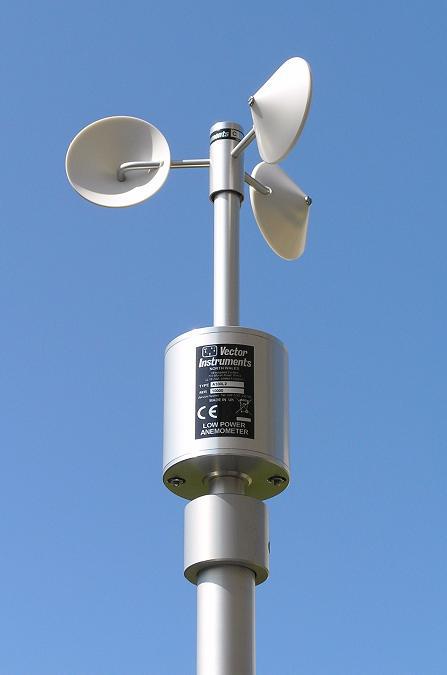Picking the Right Anemometer: A Comprehensive Acquiring Overview
Picking the Right Anemometer: A Comprehensive Acquiring Overview
Blog Article
Checking Out the Features and Benefits of Anemometers for Climate Enthusiasts and Professionals
From mug anemometers to sonic anemometers, each type brings its unique collection of applications and advantages, losing light on numerous elements of atmospheric conditions. As we dive right into the functions and advantages of anemometers, a much deeper understanding arises not only of dominating weather condition phenomena yet additionally of the broader effects for markets like wind energy manufacturing and environmental study.
Value of Anemometers in Weather Condition Monitoring
Anemometers play an important duty in weather monitoring by providing precise measurements of wind rate, assisting in projecting and understanding weather patterns. These tools, varying from typical cup anemometers to modern ultrasonic anemometers, are vital for meteorologists, scientists, and climate lovers alike.

Types of Anemometers and Their Applications
With the crucial role anemometers play in weather monitoring and forecasting, comprehending the different kinds of these instruments and their applications comes to be important for experts and enthusiasts in the area. One of the most typical types of anemometers include mug anemometers, vane anemometers, hot-wire anemometers, and ultrasonic anemometers. Cup anemometers are composed of 3 or four cups mounted on horizontal arms that revolve with the wind, determining its rate. Vane anemometers, on the various other hand, utilize a freely revolving vane to line up with the wind direction, giving both wind speed and instructions measurements. Hot-wire anemometers operate based upon the principle of convective warmth transfer, where the cooling impact of the air flow is determined to figure out wind speed. Ultrasonic anemometers make use of ultrasonic acoustic wave to calculate wind rate and direction properly.
Cup anemometers are suitable and durable for basic weather monitoring, while vane anemometers are favored for directional dimensions. Ultrasonic anemometers are non-intrusive and provide high precision, frequently utilized in research and specialized climate monitoring applications.
Benefits of Making Use Of Anemometers in Forecasting
In weather forecasting, the use of anemometers uses very useful benefits for boosting the precision of weather condition forecasting. Anemometers gauge wind rate and instructions, supplying crucial data for forecasting climate patterns. By including wind data into projecting versions, meteorologists can better understand the movement of climate systems, prepare for changes in weather, and concern a lot more precise forecasts.
Moreover, anemometers play a vital duty in examining prospective weather hazards. Keeping track of wind rates assists forecasters anticipate severe climate events such as hurricanes, hurricanes, and wintertime storms with higher accuracy. This very early warning system enables authorities look at this website to provide timely signals and execute necessary safety measures, minimizing the risks to life and home.
Additionally, anemometers aid in optimizing renewable resource production. By assessing wind patterns, meteorologists can identify ideal locations for wind farms and forecast energy output, adding to the efficient generation of wind power.

Anemometers in Wind Power Production
Provided the essential role anemometers play in providing exact wind information for weather forecasting and danger analysis, their significance extends to the realm of wind power production. Anemometers are vital tools in the area of wind power, where the dimension of wind rate and instructions is critical for identifying the expediency and effectiveness of wind generator installments. By accurately measuring wind speeds at varying heights, anemometers assist enhance the positioning and style of wind generators to optimize power outcome.
In wind farms, anemometers are tactically put to gather real-time wind data that is utilized to evaluate the potential energy manufacturing of a website. This information contributes in establishing the financial feasibility of wind energy jobs and in forecasting energy generation to ensure grid stability. Additionally, anemometers aid in keeping an eye on wind problems to enhance turbine efficiency, protect against damages from high winds, and ensure the safety and security of personnel functioning in the vicinity of wind generators.
Enhancing Climate Comprehending With Anemometers

Anemometers play a crucial role in improving our understanding of microclimates. These localized weather can vary dramatically from broader regional projections, making it vital to have accurate information for details locations. anemometer. By tactically putting anemometers in various areas, scientists can gather comprehensive info on how wind behaves in various surfaces, city settings, or bodies of water
In addition, anemometers add to enhancing weather projecting designs by offering real-time data on wind actions. This information is specifically beneficial for anticipating severe climate occasions, optimizing farming methods, and sustaining markets like aviation and maritime navigating. Generally, anemometers are vital official site instruments that allow us to dig deeper into the intricacies of weather systems, inevitably causing more better-informed decisions and exact forecasts.
Conclusion
In final thought, anemometers play a crucial function in weather find out here now condition surveillance and forecasting by measuring wind speed and direction. Anemometers additionally have applications in wind energy production, additional highlighting their relevance in both weather forecasting and eco-friendly energy fields.
From mug anemometers to sonic anemometers, each type brings its special collection of applications and benefits, losing light on various aspects of climatic problems. These tools, varying from traditional cup anemometers to modern ultrasonic anemometers, are important for meteorologists, researchers, and weather condition lovers alike. The most typical kinds of anemometers include cup anemometers, vane anemometers, hot-wire anemometers, and ultrasonic anemometers. Cup anemometers are robust and appropriate for general climate monitoring, while vane anemometers are preferred for directional dimensions. Anemometers are essential tools in the area of wind power, where the dimension of wind speed and direction is crucial for identifying the usefulness and efficiency of wind generator installments.
Report this page